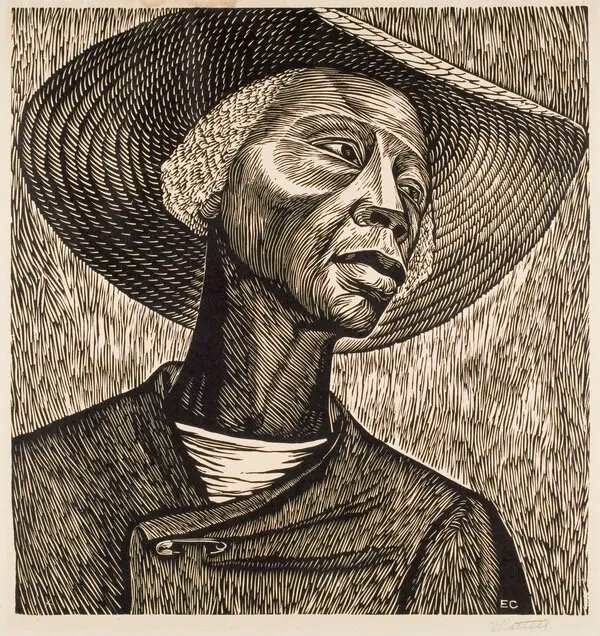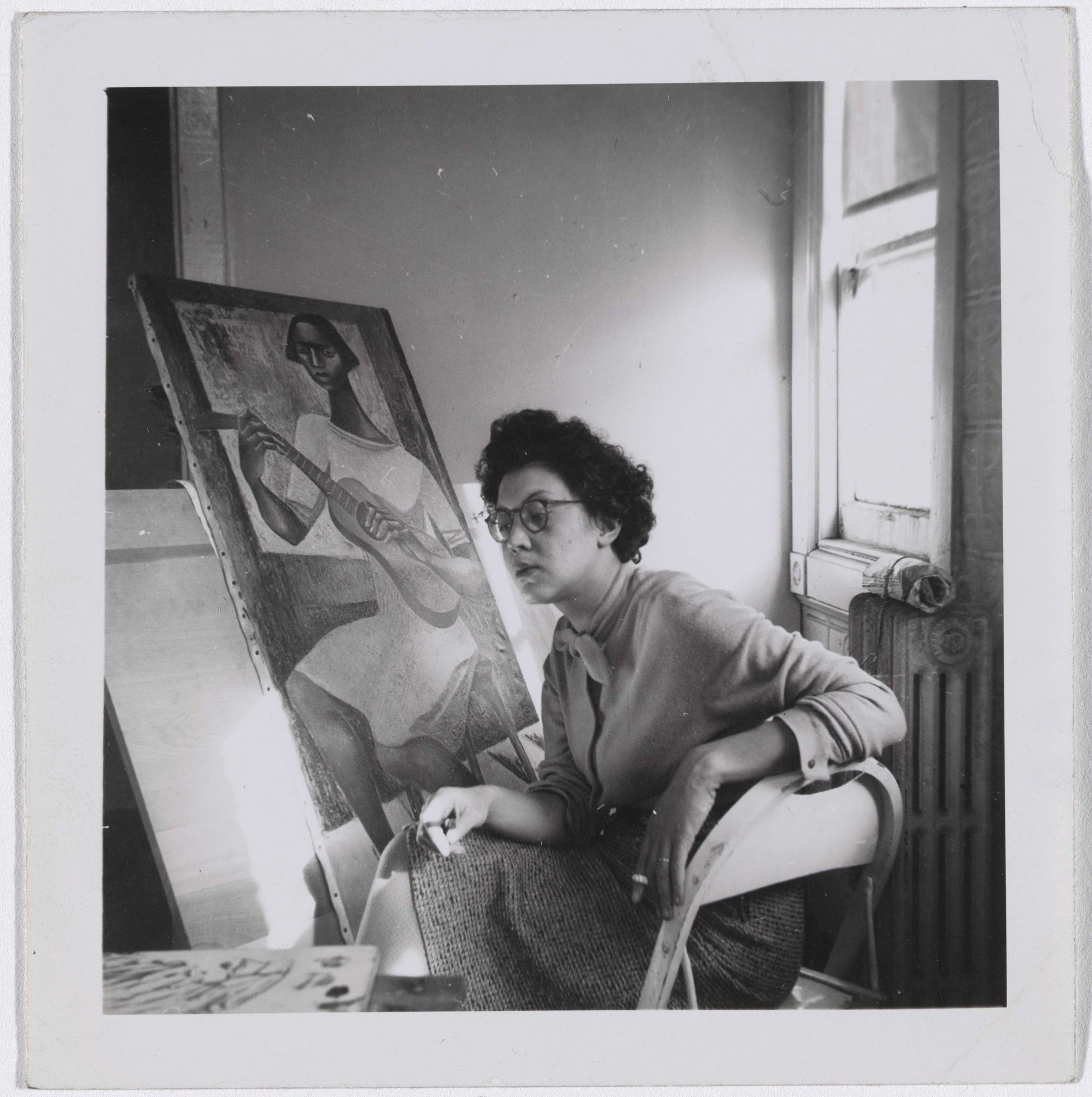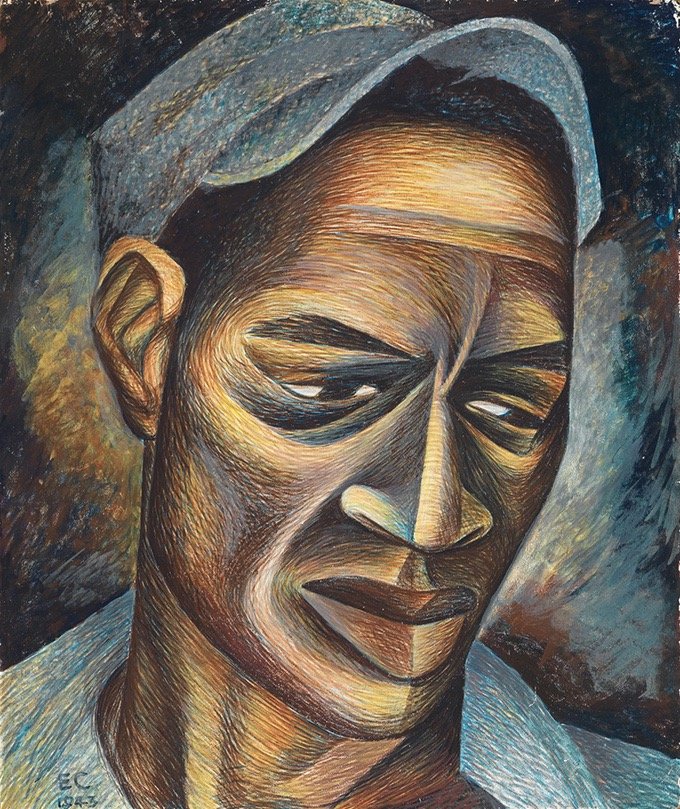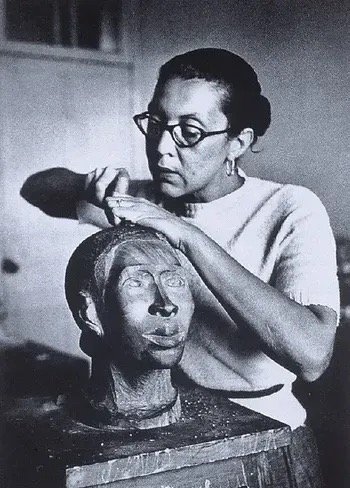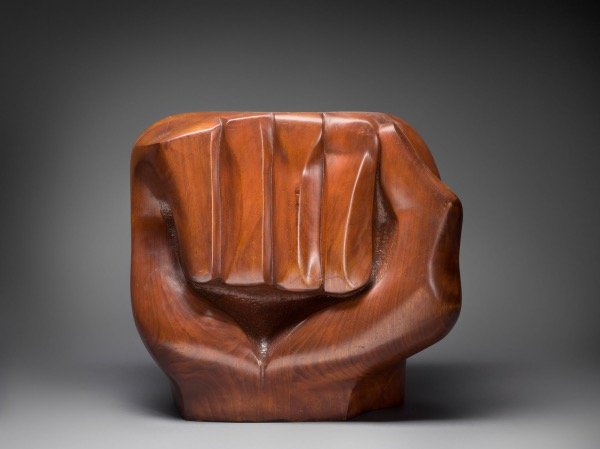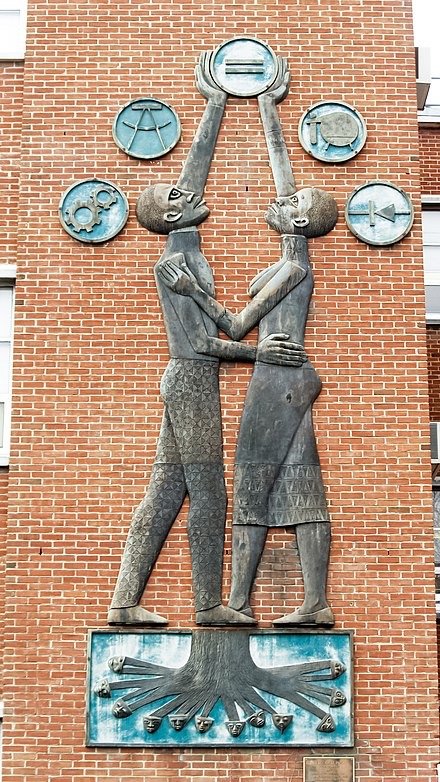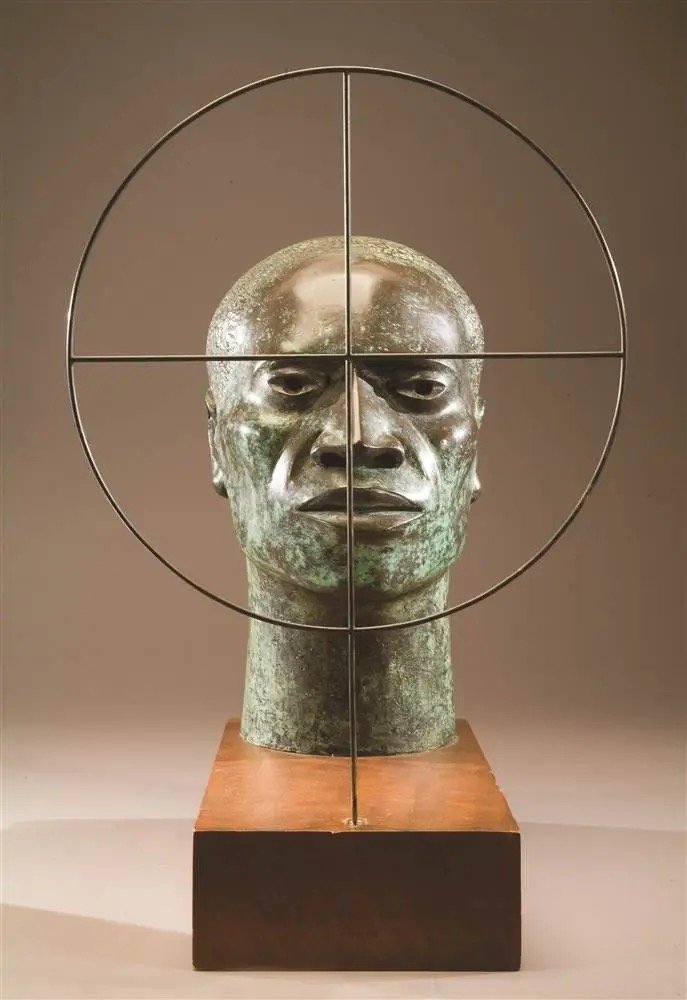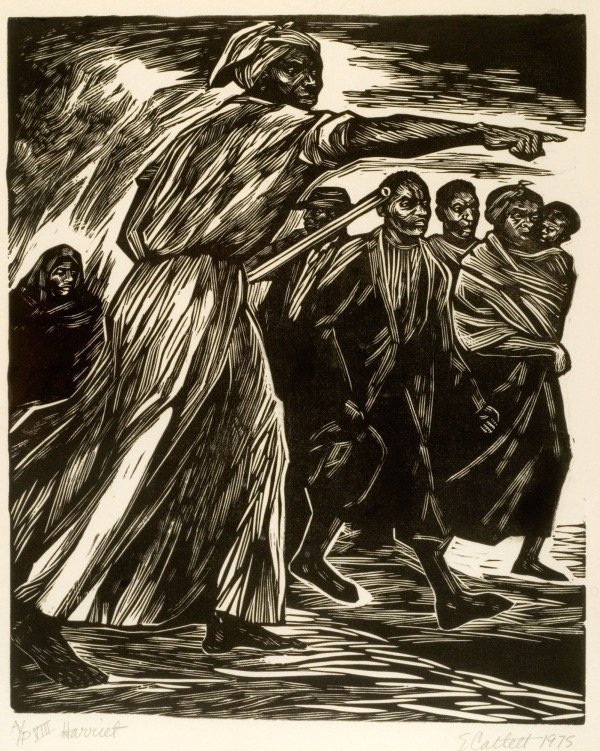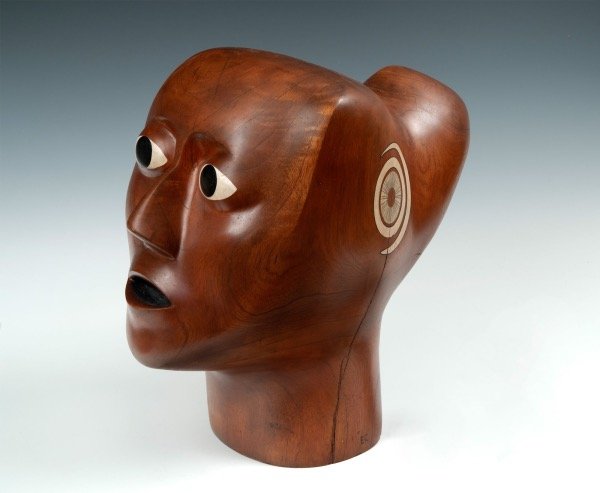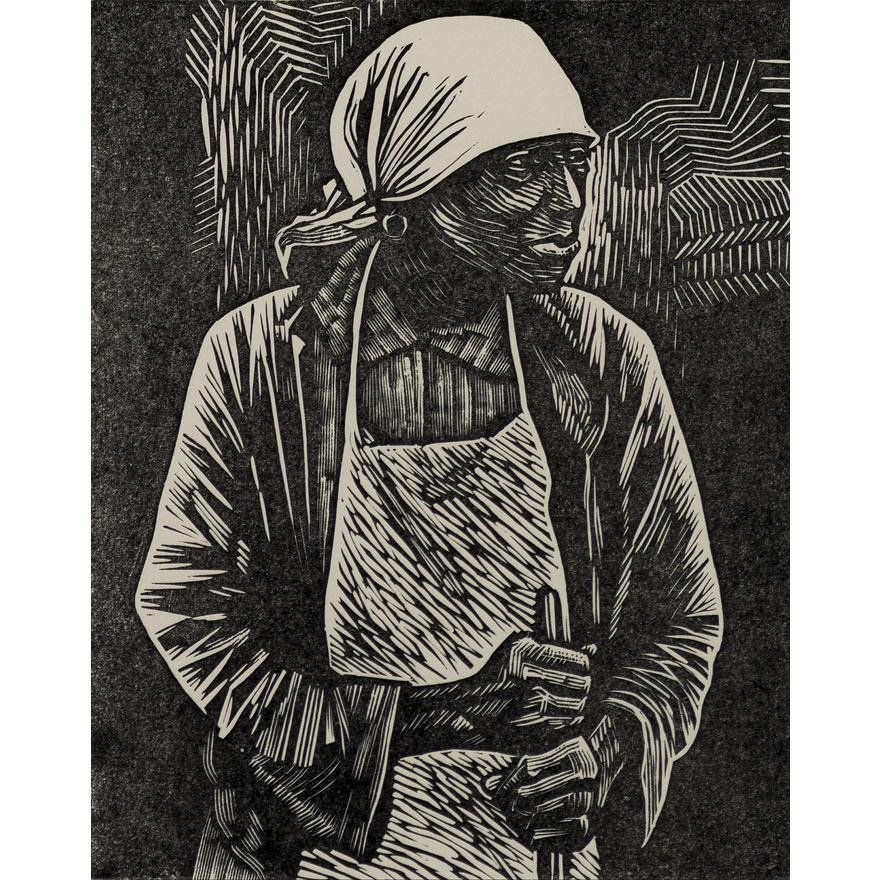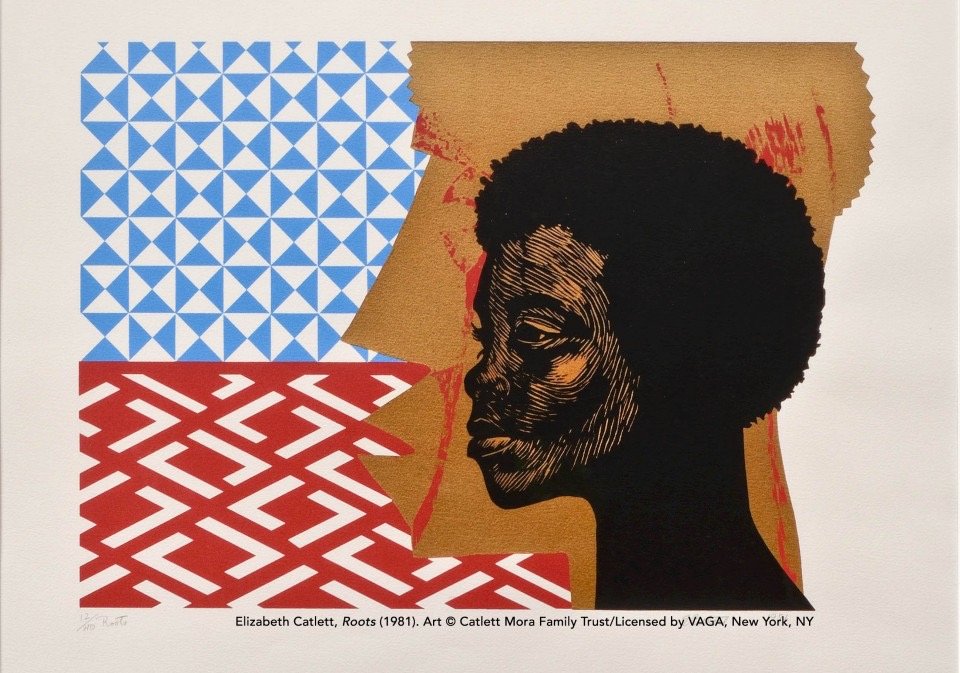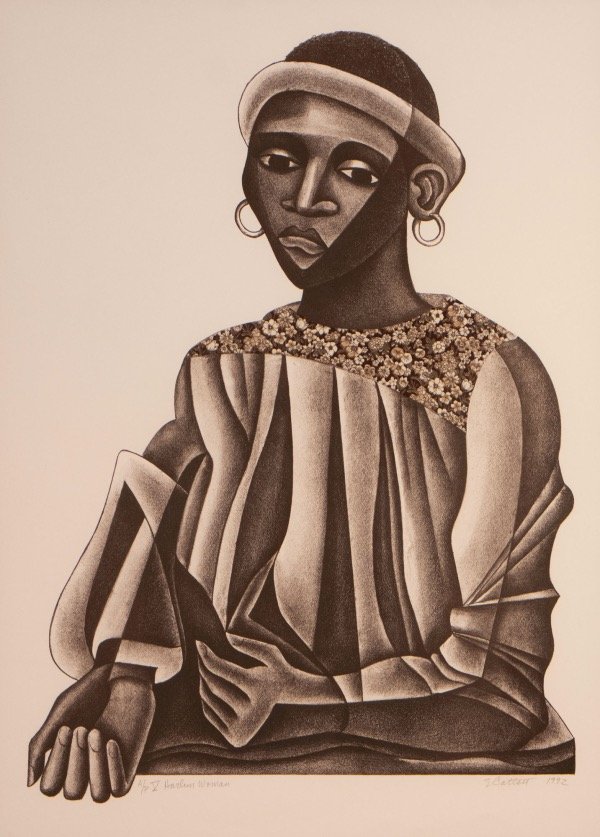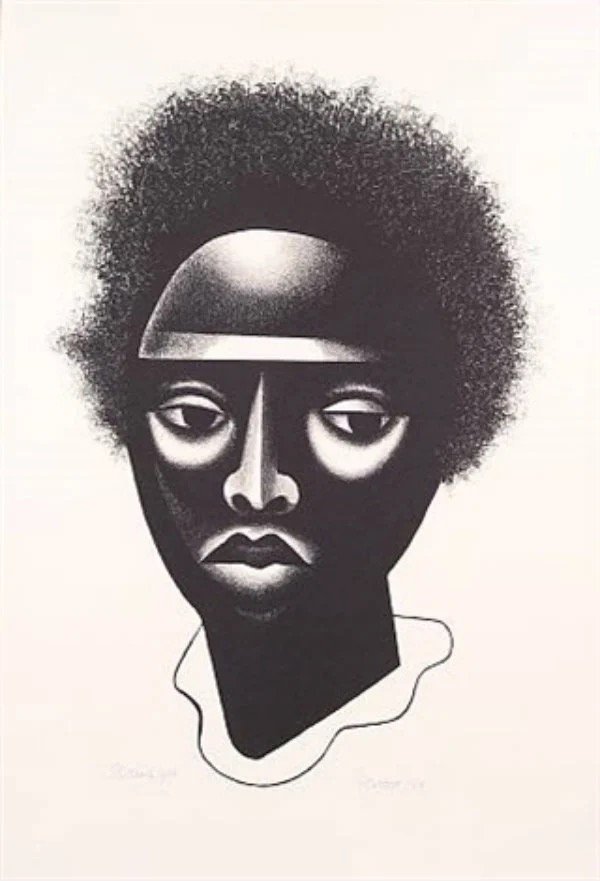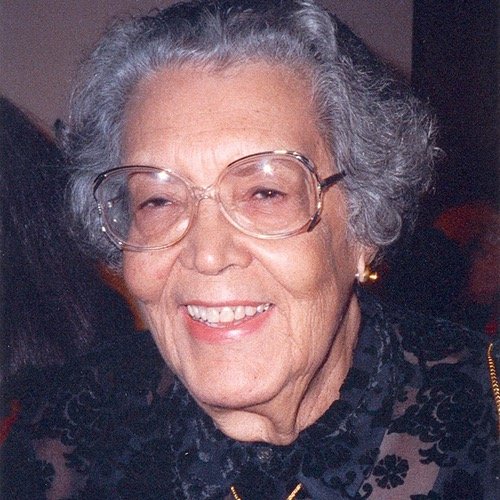Artist to Know: Elizabeth Catlett - 60 Years of Creating
Elizabeth Catlett (1915-2012) is an African American and Mexican sculptor, painter and printmaker whose powerful work depicting the experience of women has been under appreciated by the art world but is a powerful contribution to art as social change in the late 20th century. Her art career spans over an amazing 60 year period and includes work that speaks to the rich experience of women of color in the experience of work, contemplation and struggle in their journey towards freedom and dignity.
Sharecropper (1952) © 2019 Catlett Mora Family Trust / Licensed by VAGA at Artists Rights Society (ARS), NY
Catlett was born and raised in Washington, DC. Her parents were the children of freed slaves and her mother worked as a truant officer and her father as a math teacher first at Tuskegee Institute and then in the DC school system. Her father died before Catlett was born but she became fascinated in art and specifically sculpture because of a small wood carving of a bird made by her father.
Catlett graduated with honors from Howard University in 1937 where she took course work in printmaking, sculpture and painting. After graduating from Howard, Catlett moved to her mother’s hometown to teach art at Hillside High School.
Interestingly, Catlett had also been accepted to attend Carnegie Institute of Technology but was denied entrance when the school discovered she was black. Catlett was granted an honorary doctorate from Carnegie Institute of Technology in 2008 in an attempt to compensate for their unjust denial of her admission.
Catlett applied and was accepted to the graduate program at University of Iowa where American Regionlist painter Grant Wood was one of her instructors. Shockingly, despite her acceptance, she was not allowed to live in the dormitories on campus and had to rent a room off-campus.
Charles White. Elizabeth Catlett in her studio. c. 1942. Black-and-white photograph, 3 5/8 × 3 9/16" (9.2 × 9 cm). Private collection. © The Charles White Archives
While at the University of Iowa took course work in painting and drawing from Grant Wood (known for his painting American Gothic (1930)) and fellow student and sculptor Harry Edward Stinson. It was Wood who encouraged Catlett to create from what she knew, so Catlett began focusing her work on women and children a theme that would continue throughout her art over her 60 year career.
Catlett graduated from the University of Iowa’s Fine Arts department in 1940, one of the first three to graduate from the department and the first African American woman to earn that degree at the university.
Catlett moved to New Orleans in 1940 to teach at Dillard University and spent her summers in Chicago where she studied lithography at the South Side Community Art Center and ceramics at the School of the Art Institute of Chicago.
Untitled (Woman in Yellow Hat) (1943) tempera on paper; War Worker (1943) tempera on paper mounted on masonite, 11 x 9 1/4 in.; My Role Has Been Important in the Struggle (1947) linocut; Sharecroper (1948) oil on canvas.
“I have always wanted my art to service black people—to reflect us, to relate to us, to stimulate us, to make us aware of our potential.”
Artist and sculptor Elizabeth Catlett.
“There were very few black women sculptors – maybe five or six – and they all have very tough circumstances to overcome. You can be black, a woman, a sculptor, a print-maker, a teacher, a mother, a grandmother, and keep a house. It takes a lot of doing, but you can do it. All you have to do is decide to do it.”
In 1946, Catlett received the Rosenwald Fund Scholarship to travel and study in Mexico and she took part in the Taller de Gráfica Popular, a workshop dedicated to prints promoting leftist social causes and education. Catlett also studied at the Escuela Nacional de Pintura, Escultura y Grabado "La Esmeralda" in 1948 studying wood sculpture with José L. Ruíz and ceramic sculpture with Francisco Zúñiga. She met artists such as Frieda Kahlo and Diego Rivera during this period.
From 1958 until 1975, Catlett taught at the Escuela was Nacional de Artes Plásticas (now known as the Faculty of Arts and Design) at the National Autonomous University of Mexico (UNAM), initially as the first female professor of sculpture and then eventually becoming the head of the sculpture department despite protests of her being a foreigner, black and a woman. She was truly a pioneer at every stage of her life.
Black Unity (1968) Cedar, 21 × 21 1/2 × 23 in | 53.3 × 54.6 × 58.4 cm, Crystal Bridges Museum of American Art
During the 1960s and 1970s, Catlett produced some of her most iconic work much of which focused on social justice themes from the American civil rights movement. She also remained engaged in the social justice movement in Mexico which had become her home after she was deemed by the U.S. State Department as an “undesirable alien” because of her involvement and subsequent arrest during the railroad strikes in Mexico City in 1949 and she renounced her American citizenship. Catlett remained a citizen of Mexico for most of her life.
Students Aspire (1977) Howard University, Washington, D.C.; Target (1970) bronze; Harriet (1975) linocut, Linocut, H 12.25" x W 10"; Angela Libre (1972) Color lithograph on silver foil. Private collection. © 2024 Mora-Catlett Family / Licensed by VAGA at Artists Rights Society (ARS), NY. (Photo: Neil Boyd); Mother and Child #2 (1971) wood carving, Copyright 1971, Elizabeth Catlett, All Rights reserved; Black Woman Speaks (1970) spanish cedar wood carving; Survivor (1983) linocut on paper, 11 1/8 x 10 1/8 inches; Roots (1981) .
In 1975, Catlett retired from her position at Escuela was Nacional de Artes Plásticas and moved to Cuernacava where she could finally devote more of her time to creating her artwork.
Three Woman of America (1990) color screenprint, 30 × 22 in. (76.2 × 55.9 cm); Harlem Woman (1992) color lithograph crayon and ink with fabric collage, 18 × 12 in.; Black Girl (2004) Lithograph, 22 x 15 in. (55.9 x 38.1 cm.); Vanessa (2009) stabilo pencil on paper, 36 × 16 in. (91.4 × 40.6 cm).
Catlett continued to produce work from her studio in Mexico until the late 2000s.
In 2006, a curator from the University of Iowa Museum of Art purchased 27 prints from Catlett. Elizabet Catlett used the money to establish the Elizabeth Catlett Mora Scholarship Fund which supports students of color interested in studying printmaking. The University of Iowa dedicated a residence hall in Elizabeth Catlett’s name in 2017, nearly 77 years after denying her access to the residential dorms.
“No other field is closed to those who are not white and male as is the visual arts. After I decided to be an artist, the first thing I had to believe was that I, a black woman, could penetrate the art scene, and that, further, I could do so without sacrificing one iota of my blackness or my femaleness or my humanity.”
Artist Elizabeth Catlett
Elizabeth Catlett died in 2012 in Cuernavaca, Mexico at 96 years old. Her amazingly long career as pioneer in not only printmaking and sculpting but in using these mediums to capture the social injustice of marginalized people including women and children of color along with historical civil rights icons such Angela Davis and the Black Panthers galvanizers her as one of the most important talents in 20th and 21st American and Mexican artists.

